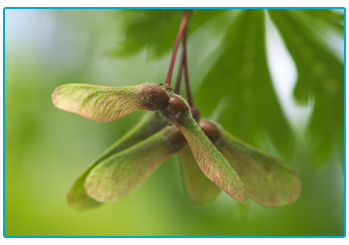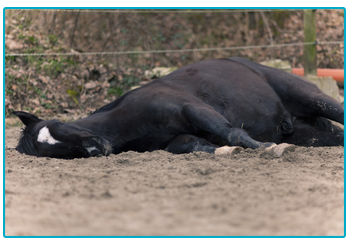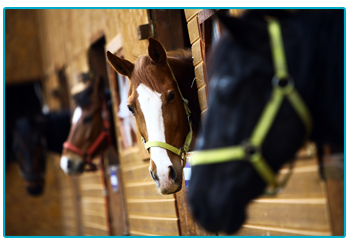With the leaves turning red and the air feeling a little bit cooler, autumn is a magical time to go on a riding adventure with your horse. However, there are some aspects of this season you should be aware of, and one of these is the rise in the risk of sycamore poisoning in horses. Otherwise known as atypical myopathy, it is a muscle disease that is sadly often fatal for horses but can be cured if spotted early. We’ve put together an Emporium equine guide to help you guard against this affliction.

What are the causes?
Sycamore poisoning can affect horses when they eat sycamore seeds, otherwise known as ‘helicopters’ because of their appearance. There is a toxin in the seeds, called Hypoglycin A, which stops muscle cells from producing energy and causes them to die. The disease is particularly common during spring and autumn, when the seeds tend to fall off the trees, but can happen at any time of year. Bad weather can also set off an outbreak of sycamore poisoning as more seeds fall from the trees, where horses tend to graze when facing adverse conditions. The likelihood of catching the disease varies between horses but younger animals tend to be more susceptible.

What are the symptoms?
If your horse is feeling lethargic, is unusually quiet or is reluctant to move, then these can be early signs of sycamore poisoning. Often, affected horses can be weak, stiff, shaky and dull. They might have trouble standing and breathing but might still be hungry. There are also a range of other symptoms the horse might experience, including depression, sweating, breathing difficulties, dark urine, a fast and irregular heartbeat or colic-like symptoms. Your horse might also collapse suddenly. When a horse shows signs of sycamore poisoning, it is important to contact your vet as soon as possible. The quicker they can be treated, the more likely they are to survive. Sycamore poisoning also tends to occur during an outbreak, so be sure to check all of your horses if one of them starts displaying symptoms.

How can you prevent it?
Thankfully, there are a range of things you can do to avoid an outbreak of sycamore poisoning. If there are sycamore trees within 100 metres of where your horses graze, it is important to regularly check the ground for seeds and be sure to fence off areas where they might fall. Make sure you dispose of sycamore seeds and young saplings safely. Don’t let your horses out for too long, keep them in their stables at night and be sure to keep the younger ones furthest from the trees when they are out. When there isn’t much for your horses to graze on, stock up on hay. Make sure your horses have fresh water to drink from and that they aren’t drinking from streams or ponds under the trees. Even if you follow all of these steps, it is important to check your horses for sycamore poisoning symptoms regularly so that they can be diagnosed and treated by a vet as early as possible.
Getting horses treated for sycamore poisoning can be costly, so equine insurance could help you avoid a costly bill if there is an outbreak of the disease. With The Insurance Emporium’s horse insurance, you can choose the Optional Benefit of Vet’s Fees cover. If you feel that this would be to your advantage, contact The Insurance Emporium today!
All content provided on this blog is for informational purposes only. We make no representations as to the accuracy or completeness of any information on this site or found by following any link on this site. We will not be liable for any errors or omissions in this information nor for the availability of this information. We will not be liable for any loss, injury or damage arising from the display or use of this information. This policy is subject to change at any time.


